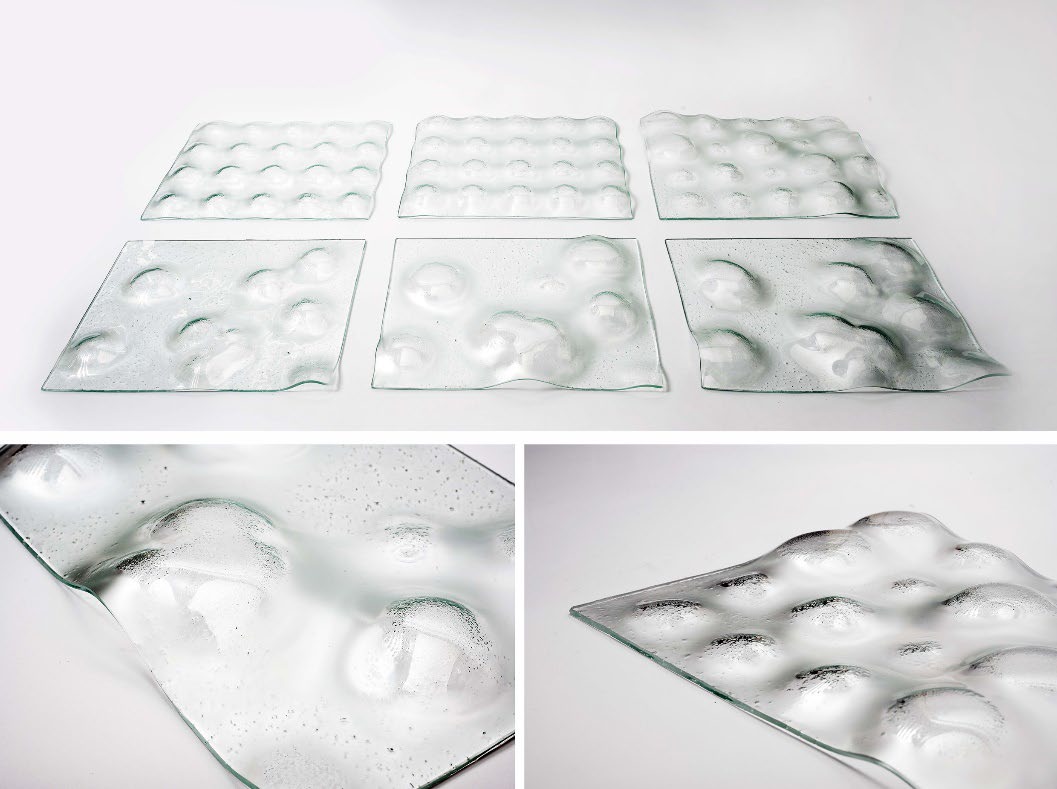Robotic Reconfigurable Sand Molding for Doubly Curved Float Glass
DOI:
https://doi.org/10.47982/cgc.8.469Downloads

Abstract
The presented research investigates loose sand forming as a reconfigurable molding strategy for custom glass parts. Doubly curved glass parts usually require the labor-intense fabrication of individual ceramic or steel molds. Reconfigurable molds for glass are limited to specific modular geometries and require costly heat-resistant actuation mechanisms. Three-dimensionally (3D) printed sand molds for glass slumping require binders and cannot be reused. The objective of this research is to facilitate a waste-free fabrication of doubly curved glass elements and a facile, fast, low-cost mold-making process for the hot bending of glass. The molding system employs granular loose sand material, which is heat resistant and can be quickly reformed. In combination with novel digital tools and robotic fabrication, the technique provides a flexible molding system for the transformation of industry-ready float glass. This research presents the first results, including possible granular material systems for loose granular molding, robotic setup and placement strategies for granular materials, and volumetric material formation considering robotic process parameters. Furthermore, it investigates mold stability during slumping and the geometric precision of mold and resulting glass elements. The resulting glass elements are fully transparent with no contamination caused. The presented approach allows for smooth curvatures, easy mold removal, and complete mold recycling without further processing. The method was applied in several mid-scale experiments, including investigations into which family of forms can be produced. The geometric freedom and limitations of the proposed fabrication method are discussed. Reconfigurable sand molding for glass could enable the geometric customization of glass elements and allow for novel optical, structural, or decorative properties in glass facades and windows.
Published
Issue
Section
Architectural Design & Geometries
License
Copyright (c) 2022 Rena Giesecke, Benjamin Dillenburger

This work is licensed under a Creative Commons Attribution 4.0 International License.



